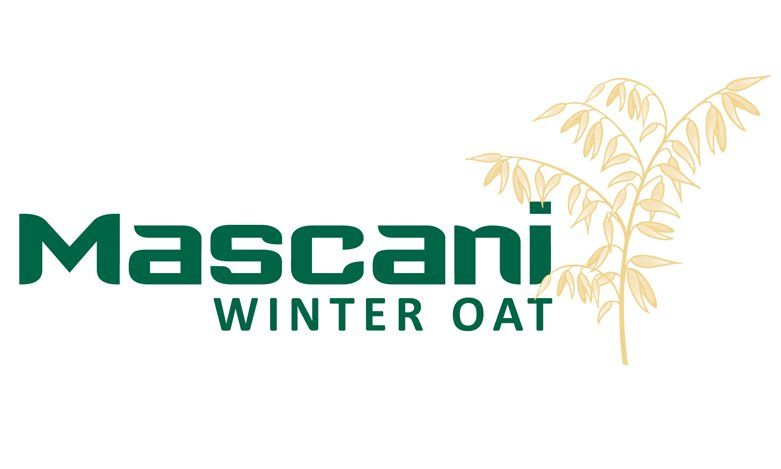Top Tips for Growing Oats
1.Select the Right Variety
Progress has been made in the breeding of new oat varieties, with the latest additions offering higher yields and good milling quality, together with better agronomic characteristics.
Much of this work has been carried out at IBERS at Aberystwyth University. The oat breeding team has been responsible for the development of new winter, spring husked and naked varieties, including those with recognised health and nutritional properties, as well as some with specific characters for specialist high value markets.
Due to miller demand, the most popular winter variety remains Mascani. Although more recent additions offer higher yields, Mascani has the quality characteristics, including high kernel content and specific weight desired by the millers, as well as some of the best disease resistance.
Senova has a new, exciting winter husked variety listed in the UK and coming through the RL system.
Cromwell looks to be a very promising variety with higher yields than Mascani and excellent grain quality characteristics.
2.Grow for the Market
There remains an increasing demand for milling oats. Consumer appetite for the healthy, nutritious products that contain oats continues to rise, helped by innovative product development.
Certain grain quality specifications are expected by the millers. A specific weight of above 50kg/hl is key, along with a kernel content of 75-78% of grain weight and low screening losses.
The level of screenings is the first loss at the mill and a specification of no more than 6% through a 2mm screen is the usual requirement. Otherwise, a moisture content of between 12 and 15% and no more than 2% of admix are essential quality checks. Quality oats should also be free from odours and taints, with minimal staining.
Millers do not always request specific varieties, but some do and it is always worth checking for any preferences.
Some millers have a requirement for oats which have been grown without the use of growth regulators, while others may need organic oats.
3.Choose the Right Site
Oats are a useful low input cereal break crop, often grown in the second cereal slot and on lighter land sites, where they perform very well. They have a role in reducing soil-borne diseases, such as take-all, and offer scope to reduce the environmental footprint of the farm they are being grown on.
Selecting suitable fields for oats is important. Grass weed management in the crop remains a challenge, as there are very few effective herbicides available for this purpose. As a result, fields with significant black-grass, ryegrass, brome or wild oat populations should be avoided, to prevent seed return and problems in the following crops.
Where there is a known weed problem, every effort should be made to reduce grass weed populations by cultural control methods, such as the use of stale seedbeds prior to drilling. Rotational ploughing ahead of oats should also be considered.
4.Check Sowing Date
Oats have a wide autumn drilling window, ranging from mid-September right through until November.
In practice, they are usually drilled in the first half of October, after oilseed rape and wheat drilling has been completed. The optimum drilling date is from mid-September to mid-October.
There is evidence to suggest that crops drilled in mid-September achieve the highest yields. This must be balanced with an increased risk of disease, especially mildew, grass weed infestation and the possibility that virus-transmitting aphids will still be active. Thicker, earlier drilled crops also present a greater lodging risk.
However, getting the crop established earlier means that it is less susceptible to frost lift and winter kill. Well established crops with good root systems are also less likely to suffer from transient nutrient deficiencies and very dry springs.
Spring oats have a shorter growing season than other spring cereals and the aim is usually to drill from late February to early April, depending on location and conditions. Recently more drilling of spring oats in the autumn has taken place with milder winters becoming more the norm in the UK.
5.Adjust Seed Rate
Sowing date, soil type and seedbed quality must to be taken into consideration when deciding on seed rates. Like wheat, oats have good tiller production ability, so can compensate for lower plant populations. Where later sowing is taking place, expected emergence figures of 50-70% should be used to calculate seed rates.
Setting the crop up with an optimum population reduces lodging risk far more than any PGR use in the spring. Optimum seed rates range from 300-350 seeds/m² for husked varieties – oats are less susceptible to slug damage than other cereals, so plant loss is rare. The aim is to establish around 250 plants/m².
Where grass weeds are a problem, seed rates should not be reduced.
6.Apply Enough Nitrogen
Nitrogen recommendations for winter oats can be found in the updated RB209 fertiliser guidelines from AHDB. http://www.ahdb.org.uk/projects/RB209.aspx
The latest advice suggests increasing nitrogen rates by 40kg/ha, taking the total amount applied up from 140kg/ha to 180kg/ha. This guidance reflects the introduction of shorter, higher yielding varieties with good lodging resistance, which have responded well to nitrogen rates of up to 200kg/ha in trials.
Two splits are needed at these higher rates, with 40kg/ha going on in late February/early March and the remainder being applied just before stem extension. Following drier winters less nitrogen may be needed in the first application.
As with other crops, all nitrogen decisions should consider soil nitrogen supply, previous organic inputs and inherent soil fertility.
For spring oats, depending on soil type and SNS index, typically 70-140 kg N/ha should be applied. For crops drilled before March, apply nitrogen at early stem extension but not before early april or after early May. For amounts greater than 70 kg N/ha, apply 40 kg N/ha of the total in the seedbed except on light sand soils. On these soils apply 40 kg N/ha at the 3 leaf stage but not before March. For late-drilled crops, all the nitrogen can be applied in the seedbed except on light sand soils where amounts greater than 70 kg N/ha should be split with 40 kg N/ha in the seedbed and the remainder by the 3 leaf stage.
Speak to your agronomist for more information.
Oats can be prone to manganese deficiency and this should be borne in mind for field selection.
Oat Mosaic Virus
Oat Mosaic Virus (OMV) is a soil borne virus which can infect oat crops and seriously reduce yield. It produces mottling of leaves and plants can appear shorter and leaves are narrower. As the virus is soil-borne then it can be patchy. Incidence varies betwen years.
There appears to be a range of susceptibility in varieties.
Dalguise - moderately susceptible
Mascani - resistant
Cromwell - moderately resistant from limited data
New varieties are under test but low infections of OMV on trial sites prevent us from accurately assessing their susceptibility or resistance.




